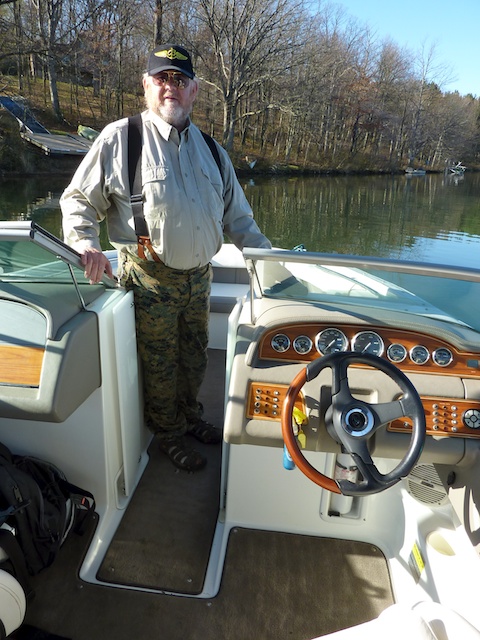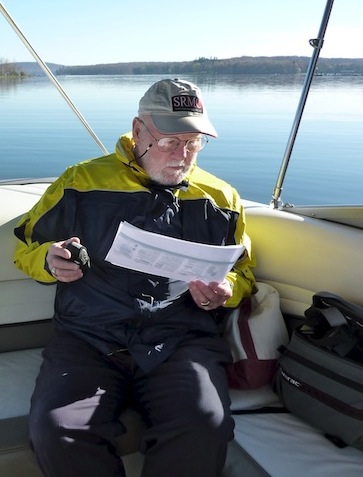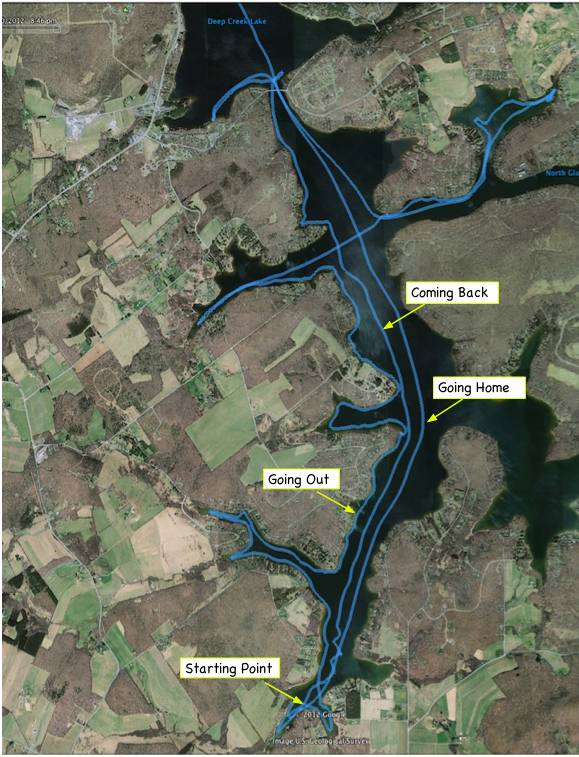
Shoreline Erosion at Deep Creek Lake
We suspect that the sediment in the lake is mostly the result of shoreline erosion, at least in the last couple of decades. The current study by DNR (Phase II of the Sediment and Erosion Study - Spring 2012), does provide some insight. Shoreline erosion is a severe problem. In some areas, erosion can remove a foot of shoreline per year. There are many contrary opinions floating around about the causes and possible remedies. This note aims to assess the problem and suggest solutions.
There is a get deal of literature on shoreline erosion and this will take some time to dig through it and extract those elements that are relevant to Deep Creek Lake. A bibliography of relevant documents can be found here. while a glossery of terms used on this website can be found here](/shoreline_erosion/erosion_glossary)
A Boat Tour
To get a better understand of the Deep Creek Lake issues, several of us from the SPORE group set out on a beautiful spring day to photograph shoreline sections that demonstrated to our eyes the issues about shoreline erosion. Here are the three of us that went on that tour: Morgan France, Ed Neff, and Pete Versteegen.

Figure 1. Morgan France

Figure 2. Ed Neff

Figure 3. Pete Versteegen
We spent much of the day touring around the coastline of Deep Creek Lake south of the Glendale Bridge, taking occasional photographs of segments of the shoreline that told an interesting erosion story. We took over 200 photographs while cruising along the shoreline. The image below, Figure 4, shows our trajectory around the lake.

Figure 4. Map of Our Boat Tour.
The photos taken on the above mentioned boat tour represent certain aspects of shoreline erosion. The photos are numbered Ax_time-of-day, where x is from 1 - 135 and time-of-time is hr-min-sec. Many pictures have a comment at the bottom.
A gallery of pictures can be found at the following link:
The following observations are made from these photographs:
- Erosion is present everywhere. [101, 102, ]
- Root structures, such as from trees and bushes do not offer protection against erosion. [32, 101, 103, 105, 108, 109]
- Erosion is particularly noticeable on steep slopes.
- On steep slopes erosion is present way above the high water mark. [116, 117]
- Particulalrly on steep slopes, erosion can be very destructive. [118]
- Unprotected shore lines an shallow slopes can experience extensive erosion. [104, 133]
- Erosion can be particularly severe when the soil is very sandy. [106]
- Rip rap on the shore line offers protection agains erosion. [113, 122, 123]
- Walls offer protection also. With rip rap on the water-side to break the waves they can be made to look nice. [17, 125, 127, 128]
- Erosion takes place in areas that are not adjacent to homes. The mechanism is the same [126]
- Natural vegetation somes works to protect the shoreline somewhat but is often aide by runoff from rain from the adjacent land because of silt deposition. [3, 6]
- The DNR crew collection bathymetric data can be seen at work. [6, 7]
PLV
First Published: 6/3/2012